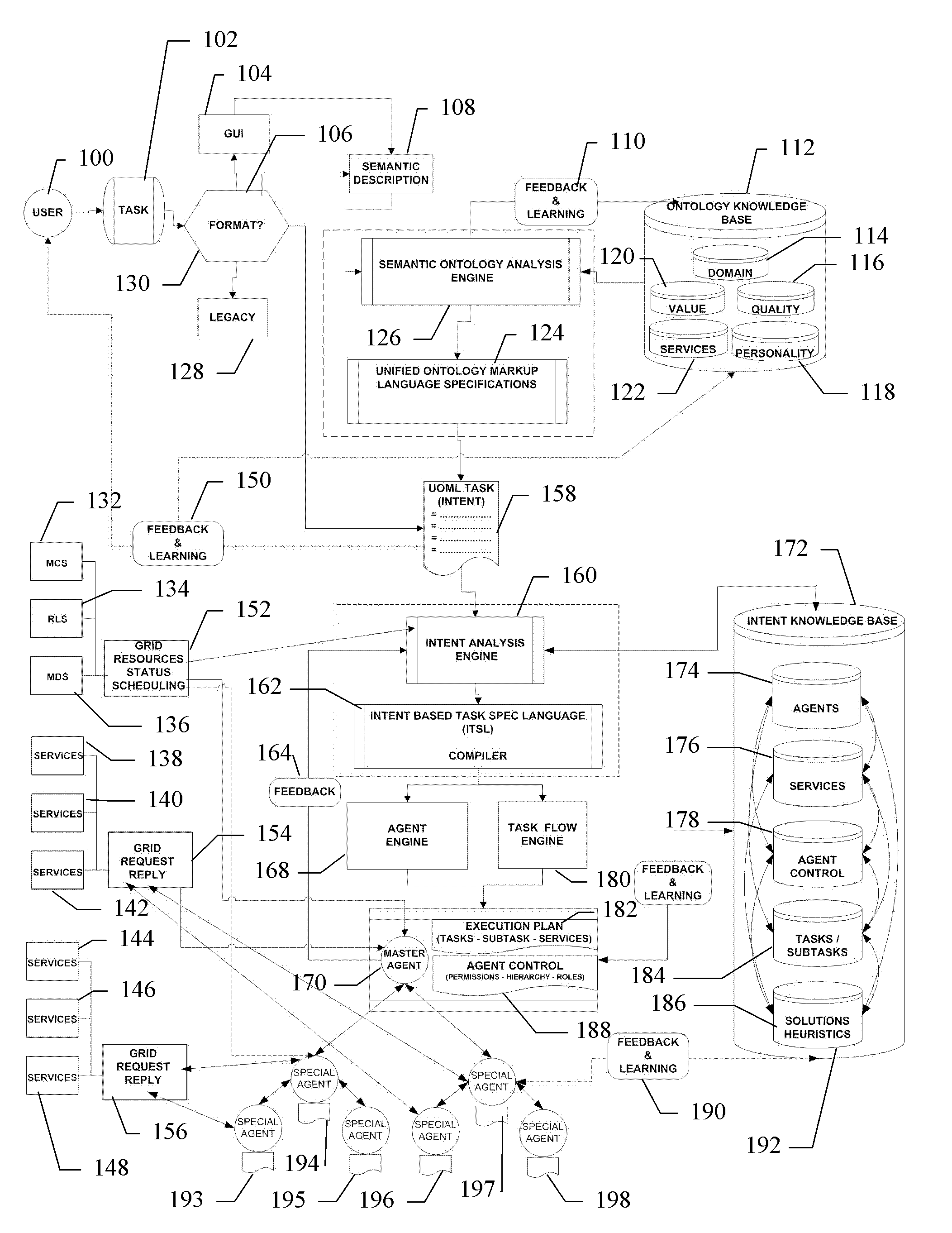Intent-Based Ontology for Grid Computing Using Autonomous Mobile Agents
a technology of ontology and grid computing, applied in the direction of source code creation/generation, multi-programming arrangements, program control, etc., can solve the problem of not using the grid to its full potential, and achieve the effect of flexible decision-making
- Summary
- Abstract
- Description
- Claims
- Application Information
AI Technical Summary
Benefits of technology
Problems solved by technology
Method used
Image
Examples
Embodiment Construction
[0022]An integral part of this project is to test and evaluate available semantic ontology and workflow description technologies used on the Grid, and develop a unified ontology markup language that would describe a given task as a portable set of primitives that can be broken down into separate tasks. The analysis of the problem will use a knowledge base of ontologies for different fields of scientific research, allowing it to create general Grid task from area-specific requests. Part of the project will evaluate and leverage existing Web Services' semantic task specification languages and determine the ways of mapping these languages to the ontologies used by the agent framework, extending these languages to support the requirement posed by multi-agent environments.
[0023]1. User-Level Task Specification
[0024]The proposed framework will be able to receive input that is a semantically described task, using one of the available languages, such as BPEL4WS. This task can be enriched wi...
PUM
 Login to View More
Login to View More Abstract
Description
Claims
Application Information
 Login to View More
Login to View More - R&D
- Intellectual Property
- Life Sciences
- Materials
- Tech Scout
- Unparalleled Data Quality
- Higher Quality Content
- 60% Fewer Hallucinations
Browse by: Latest US Patents, China's latest patents, Technical Efficacy Thesaurus, Application Domain, Technology Topic, Popular Technical Reports.
© 2025 PatSnap. All rights reserved.Legal|Privacy policy|Modern Slavery Act Transparency Statement|Sitemap|About US| Contact US: help@patsnap.com


